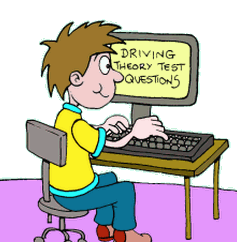Tips on driving in half light
Most drivers prefer driving in the day in good light in optimum road conditions, because these are the best conditions in which to see exactly what is going on in the road.
However there are some drivers that prefer to drive at night, and there are a lot of people who work certain patterns who are accustomed to pretty much always driving in the dark, particularly in the Winter months.
But not many people like driving at times that are between light - dusk and dawn. You should use your dipped headlights in these conditions to ensure that you are have good visibility. You don't need to start doing what other road users are doing in terms of the lights - if you think it would be at all useful to put them on, then put them on - don't feel you have to wait until most other road users have put theirs on.
You should also slow down in order to give yourself more time to react in these conditions. Particularly if the light conditions are changing quickly too such as it is getting darker, and make sure that you are able to stop the vehicle within the distance that the headlights illuminate in front of them.
By being extra vigiliant, using lights and ensuring that you are going a little slower then even in conditions such as an unlit road you can help to keep yourself and other drivers safe by adopting sensible driving practices.
Related Articles...
Car Driving Test Fees
This article looks at the costs, which were correct as of October 2009.
A standard car and motorcycle theory test costs £31.
In terms of the practical test, the price is a good deal...
Vehicles that cannot be used for a practical test
The vast majority of drivers will of course use the vehicle of their instructor or driving school when they take their practical test and so will not need to worry about the vehicle.
However...
Online Driving Theory
Why use an online driving theory website when there are also some books in publication that will help you study for your theory test? Well, there are several advantages to online driving theory,...
Driving Theory
Practice makes perfect. It is a known fact that if you practice a particular skill, you get better at it. This is true of mental skills such as performing mental arithmetic: the more you try to do...
What to do if you breakdown at a level crossing
Driving is potentially dangerous, but it is important not to worry about things that could happen when driving but at the same time you should know what to do in the unlikely event that something...
Your engine temperature gauge
These days many of us get into a car without really understanding how any of it works, and even the engine and how it operates and powers the car is a mystery to many.
Well, essentially it...
Professional driving instructors
When you learn to drive, you have the choice who teaches you. The majority of people decide to learn through a professional driving instructor and often through a major school of...
DSA Driving Theory Test
Do not view the DSA Driving Theory Test as something of an inconvenience. Instead view it as a way to develop useful knowledge that could save your life or that of someone else. If that seems like...
Mock Driving Theory Test
Many learner drivers are in the process of finishing A-levels or at university, and so the process of exams and tests is very familiar to you. For those that tests and exams are a distant memory, a...
What to expect at a hazard perception test
The test has fourteen different clips, as outlined in the article entitled 'how to pass the hazard perception test'.
Each of those clips starts counting down from ten to zero, in order to...
Back to home page of driving theory test questions

